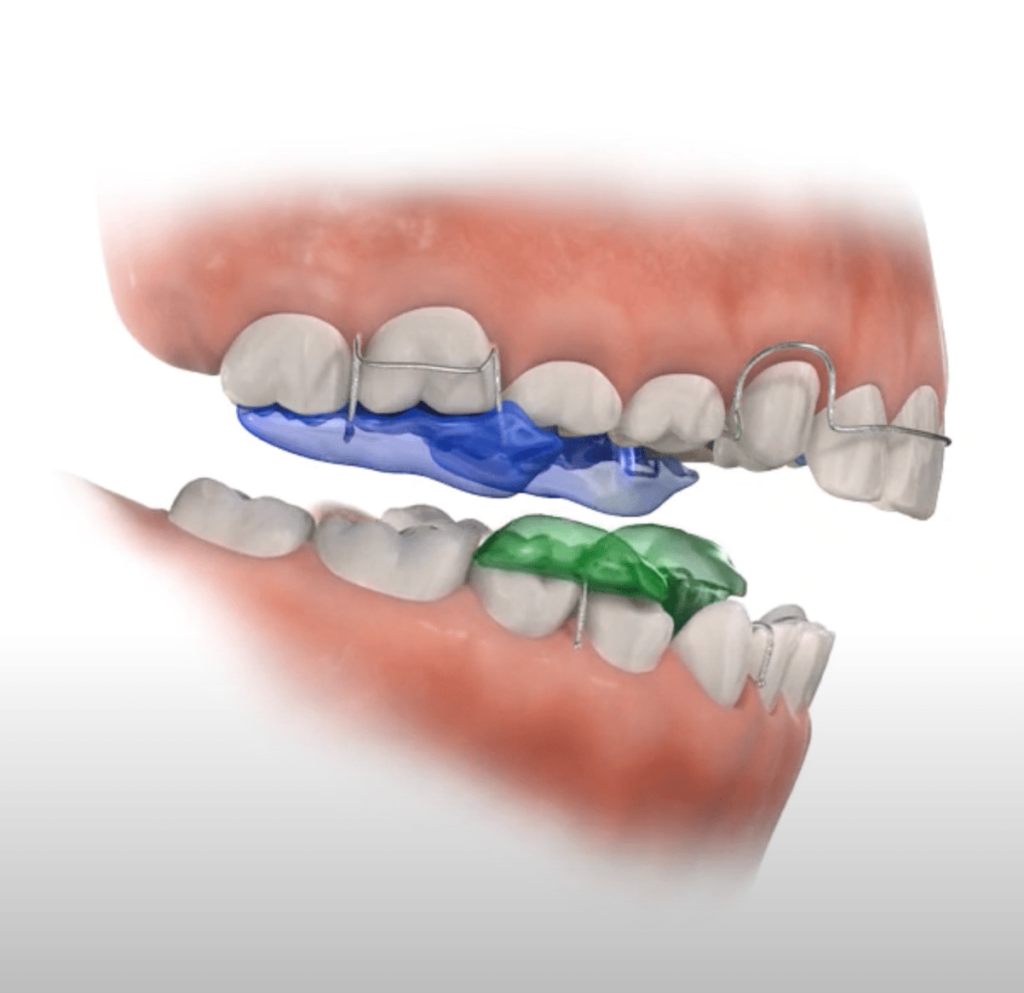Functional appliances in orthodontics are used to correct dental and jaw irregularities, particularly in growing children. These appliances can influence the shape, size, and position of the bones by applying natural forces, thus helping to correct abnormalities. The name “functional” is derived from the ability to modify the function of the jaws and related muscles.
When an orthodontist determines that a child needs this type of treatment, they will order a custom appliance. Sometimes, these appliances incorporate components from both fixed and removable orthodontic devices, as well as external tools.

Types of Functional Appliances
- Removable Functional Appliance: The removable type is more commonly used than the fixed version. It consists of separate upper and lower components, often referred to as a twin block because of the way both pieces function together. The patient can place and remove these appliances as needed.
- Fixed Functional Appliance: The fixed appliance, often called a Herbst appliance, is attached to the dental arches and anchored with elastic bands to the upper and lower molars. It is used to correct a recessed lower jaw by stimulating growth in the jawbone.
The success of the removable appliance depends on the cooperation of the child and their parents. In cases where children do not cooperate well, a fixed appliance may be recommended. Removable appliances are suitable only for certain patients. Headgear or tooth extractions can be alternatives to functional appliances, but the choice depends on the severity of the problem and the orthodontist’s recommendation.
Best Age for Functional Appliance Treatment
The appropriate age for this treatment depends on the type and severity of the misalignment. Functional orthodontic treatment is most effective during the growth period. The ideal age range is between 6 to 14 years. Typically, the best time for girls is between 10 to 11 years old, and for boys, it’s between 11 to 12 years old.
Advantages of Functional Appliance Treatment
- Improves the appearance of teeth and facial structure
- Properly directs the forces on the jaw and teeth
- Enhances speech
- Corrects the function of facial and oral muscles
- Reduces or eliminates the need for surgery in the future
- Lower cost compared to jaw and facial surgery
- Decreases the need for extraction of permanent teeth later in life
Disadvantages of Functional Appliance Treatment
- Some children may not cooperate with the use of functional appliances, making it harder to use than braces.
- The timing of the treatment is crucial. Early treatment may not be effective and could extend the treatment period unnecessarily, while late treatment may lead to weak or suboptimal results.
- If the appliance is not worn enough, the treatment will not be effective.
- Patients using removable appliances should understand that the success of the treatment is in their hands. Without full cooperation, the results will not be satisfactory.
- The key to success is bone growth, and the more growth that occurs during this period, the more effective the treatment will be.
Information About Treatment Duration and Usage
The treatment period with functional appliances depends on the severity of the issue, but typically lasts between 9 to 12 months. After that, the appliance may only need to be worn at night to maintain the treatment results.
Following the orthodontist’s recommendations is crucial for successful outcomes. The appliance should be worn full-time, except during meals and brushing. If the appliance is worn consistently throughout the day, results will become noticeable more quickly.
Functional appliances provide a powerful tool for addressing dental and jaw misalignments, especially when used at the right time and with full patient cooperation.
